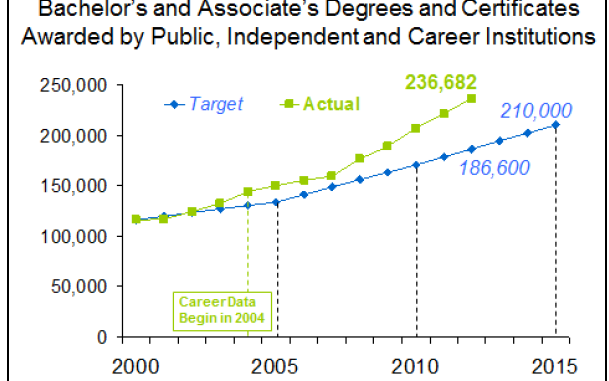
By Alex Gonzalez
The politics of poverty and education tarnish the advancements of Hispanics/Latinos in the country. The politics of poverty too often box-in Latinos as a needy group while not taking into consideration that Latino are similar to “whites” in poverty rates. It is true what Mitt Romney says about Latinos: Latinos the same as any other American group whose aspirations are driven by the pursuit of The America dream. Additionally, it is also 65% of Latinos who do not want to be singled out as minority and thus choose to self-identify as “white” while maintaining their country of origin roots. So when explaining why 25% of Latinos live in poverty, Hispanic Republican officials failed to acknowledge that what caused poverty among Latinos was generated by the mere fact that Latinos are a generation behind average Republican voters. Thus, poverty among Latinos is a condition of youthfulness, as opposed to cultural or racial factor.
Moreover, the unintended consequences of not making this economic connection between youth and education forces Latino Republicans and elected officials to falsely portray Latinos as a group prone to poverty, and thereby, potential democrat voters. However, this “poverty” image for Latinos by Latinos has unintended consequences in the political arena where Republican voters–rather than seeing young Latinos as the next generations of Republican voters– often buy into the idea that Latinos are a group of poor voters who only vote democrat because they want “handouts” (notwithstanding the fact that Latinos will pay for the benefits paid to baby boomers).
As a result, often Hispanic Republicans–who otherwise could make a clear argument that Latinos will become the ideal college-educated voting bloc high-tax contributors — miss the opportunity to make a substantive conservative, appeal to Latino. Therefore, Republican Hispanic officials fail to note that the poverty is not based on sole Latino issues, but rather a condition that prevails among the “White” southern and in other rural states. While the number of “poor” Latinos in the nation dropped to 13.2 million, there about 22 million of non-Hispanic “poor” whites. The failure of no addressing this poverty among “whites”, gives the impression that the poverty is a non-“white” issue, and thereby, creates false argument that poverty affects only Latinos.
Below is the report by Federal Reserve Bank of Dallas stressing that the only reason why the Latino poverty levels is at 25% while “whites” levels is only at 10%, is the difference on age.
Limited English Skills, Relative Youth Contribute to Hispanic Poverty Rates
Hispanic poverty rates are high compared with other major demographic groups and have improved little in the past four decades. In 2010, 26.4 percent of Texas Hispanics fell below the poverty line versus 9.2 percent of non-Hispanic whites (Chart 1A); nationally, 24.6 percent of Hispanics and 10.5 percent of non-Hispanic whites were poor (Chart 1B) Hispanic performance has also been disappointing when compared with other minorities nationally. Hispanic poverty rates have fallen 12 percentage points in Texas but less than 1 percentage point in the U.S. over the past 40 years. Black poverty declined 12 percentage points in Texas and 9 percentage points in the U.S. during the same period. Although Hispanics have logged much greater improvement in Texas than in the U.S. since 1970, their poverty rates remain higher here.
In the U.S. Census and the American Community Survey, Hispanic is an ethnicity that can fall into any race category and is based on self-identification. A total of 50.5 million people—16.3 percent of the U.S. population—consider themselves Hispanic, according to the 2010 census. Of those, 9.5 million reside in Texas, representing 37.6 percent of the state population. In Texas, the Hispanic population grew 42 percent between 2000 and 2010; nationally, it increased 43 percent. As a result, the Hispanic population’s well-being plays an increasingly important role in regional and national economic prosperity. Hispanic workers’ skills and education will help determine the future productivity of the labor force and competitiveness of U.S. industry.
Immigrant–Native Differences
Rapid immigration could explain why Hispanic poverty rates have not kept pace with improvements realized by other relatively poor minorities that experienced much less influx from abroad—such as non-Hispanic blacks. Hispanic immigrants tend to have low levels of English fluency and education, which are correlated with poverty. Indeed, overall poverty statistics (depicted in Charts 1A and 1B) mask considerable progress among Hispanics born in the U.S., the native born. The poverty rate of native-born Hispanics has declined over the past four decades and was 7 percentage points less than that of foreign-born Hispanics in 2010 (Chart 2). The native born benefit from more education, better English proficiency and U.S. citizenship. Growth in the number of native-born Hispanics—accounting for more than 46 percent of the nation’s Hispanics age 16 and older—has outpaced immigrant inflows since 2000.
 The poverty rate of native-born Hispanics was still 10 percentage points higher than that of non-Hispanic whites in 2010, even with Hispanics’ improved economic state. One contributor is Hispanic household heads’ relative youth—poverty tends to be more pervasive among younger families and declines over time. Because earnings rise with age at a decreasing rate, poverty will fall faster for Hispanics than for non-Hispanic whites, narrowing the gap in coming years.
The poverty rate of native-born Hispanics was still 10 percentage points higher than that of non-Hispanic whites in 2010, even with Hispanics’ improved economic state. One contributor is Hispanic household heads’ relative youth—poverty tends to be more pervasive among younger families and declines over time. Because earnings rise with age at a decreasing rate, poverty will fall faster for Hispanics than for non-Hispanic whites, narrowing the gap in coming years.
Poverty Rates Fall with Time in U.S.
Although Hispanic immigrants have the highest poverty rates, these rates fall as immigrants spend more time in the U.S. (Chart 3). The Hispanic immigrant cohort that arrived in 1965–70 experienced a poverty rate of 24.7 percent in 1970, 17.5 percent in 1980 and 16 percent by 2010. Hispanic immigrants arriving in 1975–80 initially had a 31.6 percent poverty rate, which fell to 25 percent a decade later and to 17.2 percent by 2010. Every immigrant cohort pictured experienced sharp poverty rate declines during the first two decades following arrival. However, the chart reveals that the initial poverty rate has increased across cohorts. For immigrants who arrived in 1965–70, 24.7 percent lived in poverty in 1970; for arrivals in 1975– 80, 31.6 percent lived in poverty in 1980. Rising immigration from Mexico and Central America accounts for much of the trend. Those groups have less education on average than earlier waves of Hispanics from places such as Cuba and Puerto Rico.
What Contributes to Poverty?
Among household heads, the poverty gap between Hispanics and non-Hispanic whites was 13 percentage points in 2010. The gap can be decomposed into two sets of contributing factors—the differences in characteristics between the two groups, and the differences in labor market rewards (or penalties) for those characteristics.5 The focus here is on the former, the contribution of the two groups’ differing attributes to the poverty gap. Age is one factor—Hispanics are younger than non-Hispanics, on average, and younger people tend to be poorer. The poverty rate among Hispanics would drop if their average age were the same as that of non-Hispanic whites. We also examined the importance of the household head’s immigrant status, education, English ability and year-round employment. We note whether the household head is a single female, in addition to household characteristics such as the number of children, family size and residential location. Poor English-speaking ability makes the largest contribution to the poverty gap, explaining 6.1 percentage points of the 13 percentage-point poverty gap between Hispanics and non-Hispanic whites (Chart 4).
 In other words, absent the language barrier, the poverty gap would be 6.9 percentage points. Differences in educational attainment explain 1.3 percentage points of the gap. This number probably understates the importance of schooling since it assumes both groups received the same quality of instruction. In reality, studying in the U.S. provides higher returns than learning abroad. Whether the head was employed year-round accounts for 1.7 percentage points of the poverty gap; the household head’s age accounts for another 1.8 percentage points of the gap. The number of children in the household— which is larger (by 0.6 children) for Hispanics than for the non-Hispanic white group—is responsible for 1.1 percentage points of the gap. After controlling for the number of children, other differences in family size actually reduce the poverty gap by 0.7 percentage points, probably because Hispanic households include more adults than do non-Hispanic white families. The number of female-headed households does not significantly affect the poverty gap, even though half of all Hispanic children are now born to unmarried women, most of whom are themselves U.S. born.
In other words, absent the language barrier, the poverty gap would be 6.9 percentage points. Differences in educational attainment explain 1.3 percentage points of the gap. This number probably understates the importance of schooling since it assumes both groups received the same quality of instruction. In reality, studying in the U.S. provides higher returns than learning abroad. Whether the head was employed year-round accounts for 1.7 percentage points of the poverty gap; the household head’s age accounts for another 1.8 percentage points of the gap. The number of children in the household— which is larger (by 0.6 children) for Hispanics than for the non-Hispanic white group—is responsible for 1.1 percentage points of the gap. After controlling for the number of children, other differences in family size actually reduce the poverty gap by 0.7 percentage points, probably because Hispanic households include more adults than do non-Hispanic white families. The number of female-headed households does not significantly affect the poverty gap, even though half of all Hispanic children are now born to unmarried women, most of whom are themselves U.S. born.
The choice of urban-area location and state of residence decreases the gap by 0.7 percentage points. This may be surprising since many Hispanics live in areas with low-income housing and underperforming schools.8 However, these circumstances are offset by Hispanics living in or moving to parts of the country with strong economic growth, such as the Southwest (including Texas), the South and the Mountain West. Meanwhile, the household head’s immigrant status contributes 0.5 percentage points to the poverty gap, a comparatively small number. This effect is so small because English ability and education capture much of the difference between Hispanic natives and immigrants.
Differences in characteristics cannot explain 1.8 percentage points of the poverty gap. This portion of the gap is due to differences in how the labor market values characteristics among Hispanics and non- Hispanic whites. For example, non-Hispanics may earn a higher return on education than Hispanics, on average, because they are more likely to be U.S. educated. However, discrimination can also play a role. This decomposition of the poverty gap doesn’t consider such factors as comparatively less work experience, living in states with low minimum wages and lower rates of unionization. More importantly, the lack of legal status and the Great Recession are key contributors to Hispanic poverty. About half of foreign-born Hispanics are undocumented immigrants. They earn less, change jobs more frequently and receive less government aid. As a group, Hispanics’ relatively lower educational attainment and their employment concentration in economically sensitive sectors such as construction increase their vulnerability to the economic downturn.9
The Outlook for Hispanics
The future of the U.S. Hispanic population depends on its rapidly growing native-born segment. Improving education is crucial to closing the poverty gap, a goal helped by new generations that assimilate and attain higher education levels.10 Although 49 percent of Hispanic immigrants don’t have a high school degree, only 20 percent of the second generation and 18 percent of the third generation and beyond lack one. While that is impressive improvement, it compares with just 8 percent of non-Hispanic whites who lack high school completion.
Ironically, while Hispanic natives acquire far more education than their immigrant parents, they lose some positive attributes of the first generation as they assimilate. Hispanic immigrants have high labor force participation rates, high geographic mobility, high marriage rates and low nonmarital birth rates. Their children are less geographically mobile and are experiencing rising out-of-wedlock births, a troubling trend given that households headed by women tend to have elevated poverty rates. Other concerns include the growing elderly Hispanic population, which is less likely to receive pension or Social Security benefits, contributing to a high poverty incidence.
Bi is a research analyst and Orrenius is an assistant vice president and senior economist in the Research Department at the Federal Reserve Bank of Dallas. Zavodny is a professor of economics at Agnes Scott College. You can also read the report in pdf file here>>




